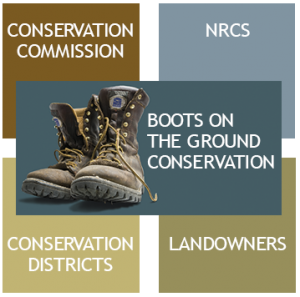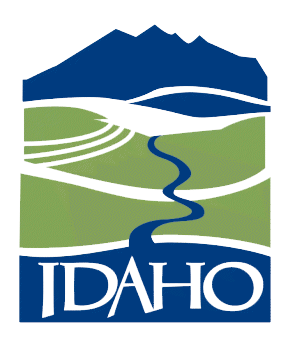
A 4-Way Partnership
Partnerships are critical to advancing good stewardship – boots on the ground conservation. Since 1939, Idaho’s traditional conservation partners have been landowners and local, state, and federal conservation agencies. Although many new partners have joined us in this important work, the original partners remain committed to working together.
Districts (local), the Commission (state), and NRCS (federal) have common objectives of delivering technical and financial assistance to farmers, ranchers, forest stewards, and other entities to voluntarily protect, restore, and enhance the productivity of American lands. The USDA Natural Resources Conservation Service (NRCS) is a key partner to Districts and the Commission, operating primarily within its Farm Bill and other conservation programs. Local and state conservation responsibilities are broader than federal programs, but all three partners recognize the importance of natural resources, their wise use and management, and as appropriate, the protection and/or development of these natural resources.
Shared objectives include:
- Continuing to support the delivery of excellent and innovative customer service;
- Recognizing conservation planning as foundational to our work, and working together to meet the conservation planning assistance needs of our cooperators/customers;
- Strengthening and modernizing conservation delivery to optimize efficiency and effectiveness;
- Broadening our outreach to existing and new customers and partners;
- Supporting science-based decision making as close to the resource issue/opportunity as possible;
- Encouraging a voluntary approach as the primary means of accomplishing conservation goals; and
- Using sound approaches to strengthen each Party and its role in the delivery of soil, water, and related natural resource conservation across Idaho.
Click on the partners below to learn more.
1. Landowners
Farmers, ranchers and other landowners are the most important part of the voluntary conservation partnership. Without their willing cooperation, conservation wouldn’t get done on private property.
2. Local Roles and Responsibilities
Conservation Districts are the boots on the ground helping landowners implement projects. Districts, in addition to state funding, receive financial and in-kind support from cities, counties, other government agencies, and nonprofit groups. See information on Idaho’s 50 Conservation Districts HERE.
3. State Roles and Responsibilities
The Conservation Commission was formed in 1939 to assist the NRCS to form local Conservation Districts in Idaho. The Commission provides financial and technical support to conservation districts statewide and also offers services and programs including providing low-interest loans to landowners for equipment and projects with conservation benefits.
4. Federal Roles and Responsibilities
The Idaho Natural Resources Conservation Service (NRCS) also provides a range of services to landowners under the federal Farm Bill conservation program, Landscape Conservation Initiatives, and more. They offer incentives to farmers, ranchers, and forest landowners who want to put wetlands, agricultural land, grasslands, and forests under long-term easements. They provide tools to help America’s farmers, ranchers, and forest landowners conserve the nation’s soil, water, air, and other natural resources. All programs are voluntary and offer science-based solutions that benefit the landowner and the environment.

